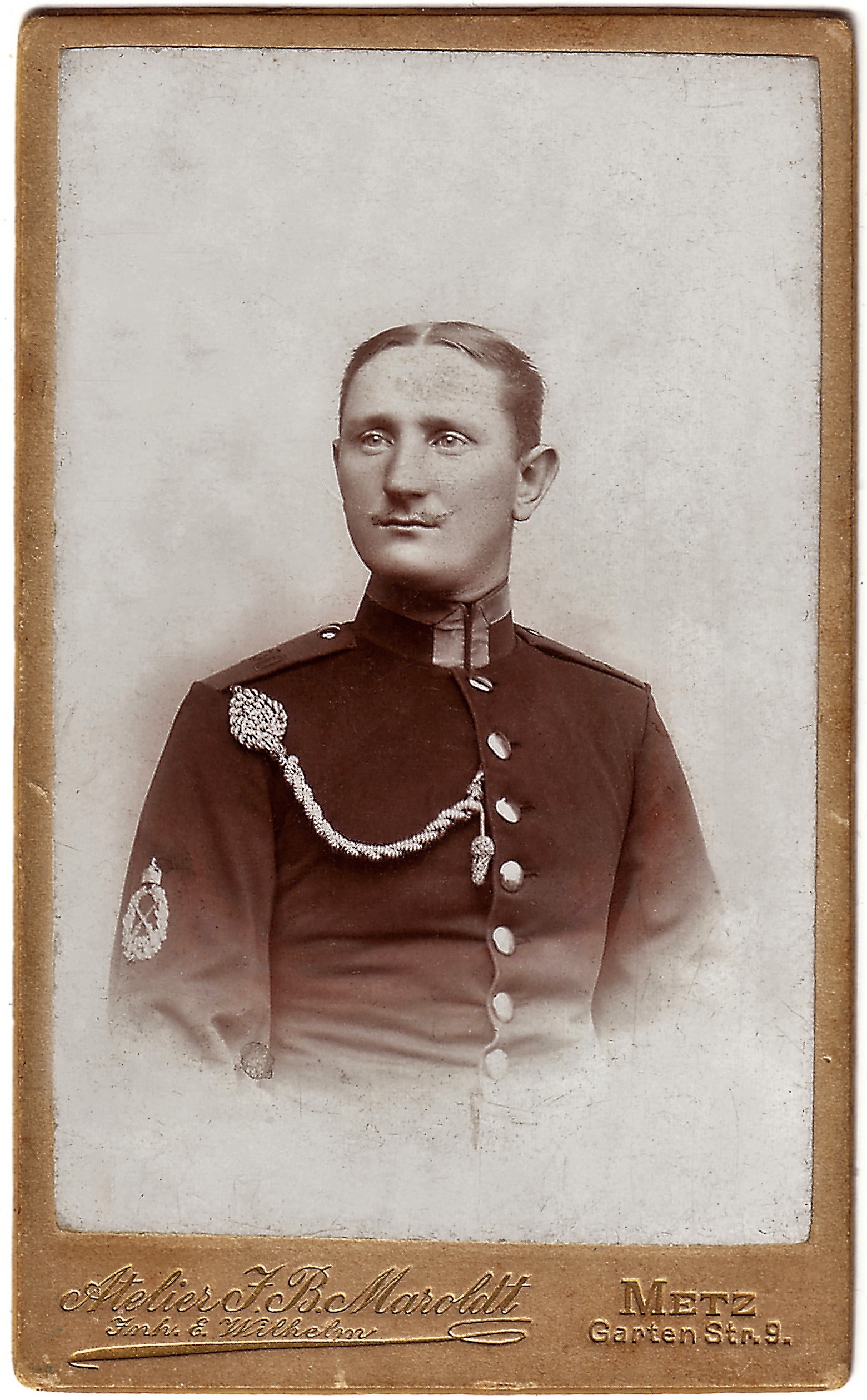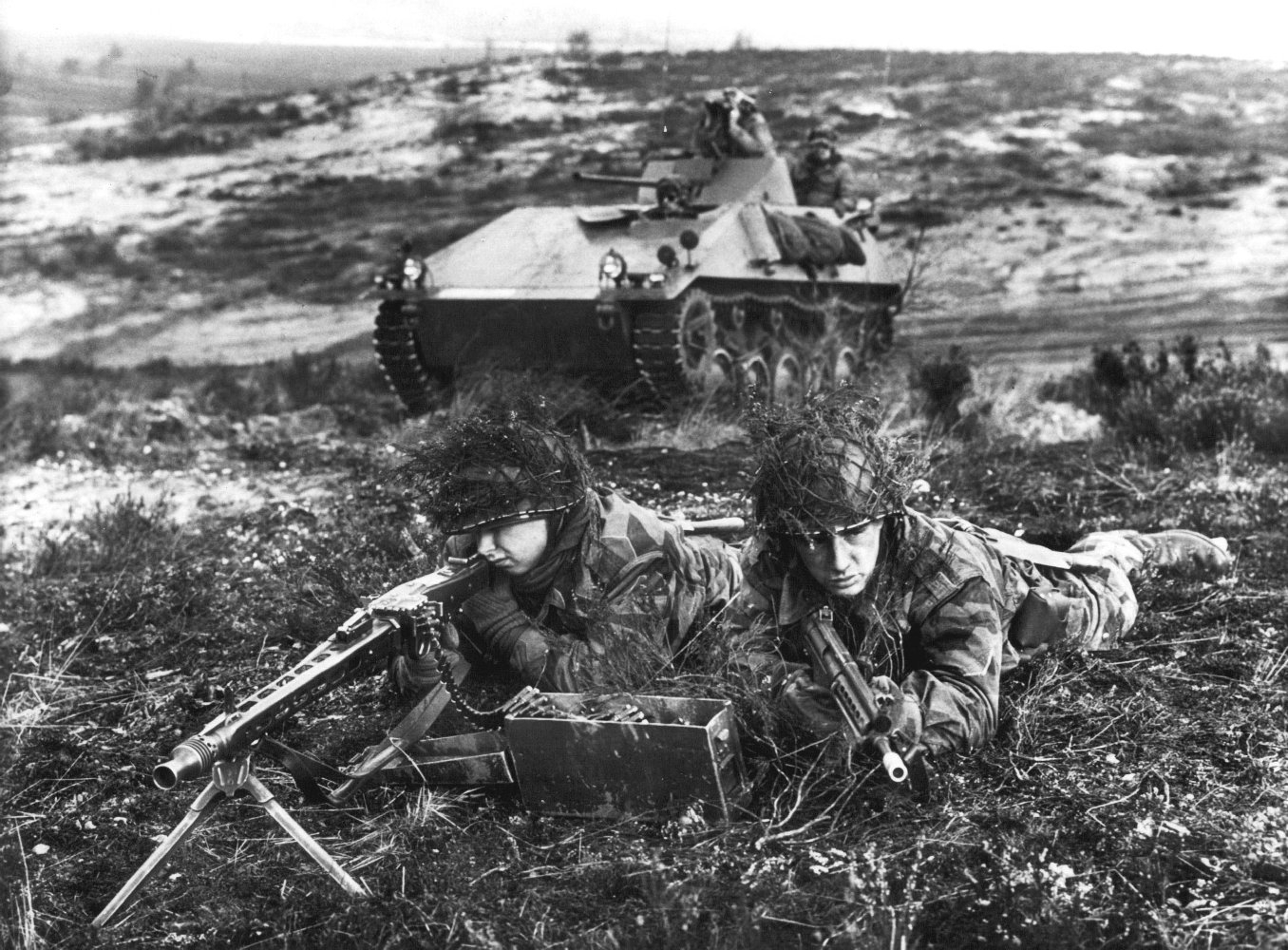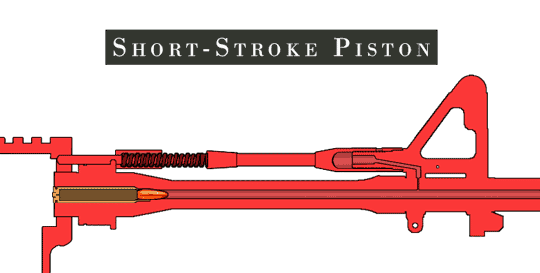|
German Armed Forces Badge Of Marksmanship
The German Armed Forces Badge for Weapons Proficiency (german: Schützenschnur) is a decoration of the Bundeswehr, the armed forces of the Federal Republic of Germany. The decoration is awarded to German military personnel of all grades but is only allowed to be worn by enlisted members. The German armed forces regulations point out that "the Schützenschnur is a decoration for weapons proficiency for enlisted soldiers." Officers can receive the award, although it is not currently authorized to be worn on their uniforms. Foreign military members also may be awarded the badge. The German military regulation on officers still applies, permitting only enlisted members to wear the badge. History The history of the ''Schützenschnur'' dates back to the Eighty Years' War where Spanish troops were ordered to hang any Dutch person who carried a musket. Therefore Spanish musketeers began to carry ropes which were often carried over one shoulder. Awarding a cord as a decoration began i ... [...More Info...] [...Related Items...] OR: [Wikipedia] [Google] [Baidu] |
German Armed Forces Badge For Military Proficiency
The German Armed Forces Badge for Military Proficiency (german: Das Abzeichen für Leistungen im Truppendienst) is a decoration of the Bundeswehr, the armed forces of the Federal Republic of Germany. The decoration is awarded to and worn by German service members of all ranks. Allied service members may also be awarded the badge, subject to their nations' uniform regulations. In the United States Army, the German Armed Forces Badge for Military Proficiency is one of several hundred foreign awards approved for wear on the uniform. Requirements To earn the award one must complete the following requirements: 1. Evaluation Report: :Evaluation report from Commanding Officer recognizing the individual’s physical and moral standards. The purpose of the evaluation is to show evidence that the individual is both physically and morally fit. 2. First Aid Course: : Combat Lifesaver Training (CLS) level 1 course or equivalent. 3. NBC Test: :Individual must demonstrate that they can pr ... [...More Info...] [...Related Items...] OR: [Wikipedia] [Google] [Baidu] |
Bundeswehr
The ''Bundeswehr'' (, meaning literally: ''Federal Defence'') is the armed forces of the Federal Republic of Germany. The ''Bundeswehr'' is divided into a military part (armed forces or ''Streitkräfte'') and a civil part, the military part consisting of the German Army, the German Navy, the German Air Force, the Joint Support Service, the Joint Medical Service, and the Cyber and Information Domain Service. , the ''Bundeswehr'' had a strength of 183,638 active-duty military personnel and 81,318 civilians, placing it among the 30 largest military forces in the world, and making it the second largest in the European Union behind France. In addition, the ''Bundeswehr'' has approximately 30,050 reserve personnel (2020). With German military expenditures at $56.0 billion, the ''Bundeswehr'' is the seventh highest-funded military in the world, though military expenditures remain relatively average at 1.3% of national GDP, well below the (non-binding) NATO target of 2%. Germany ... [...More Info...] [...Related Items...] OR: [Wikipedia] [Google] [Baidu] |
National People's Army
The National People's Army (german: Nationale Volksarmee, ; NVA ) were the armed forces of the German Democratic Republic (GDR) from 1956 to 1990. The NVA was organized into four branches: the (Ground Forces), the (Navy), the (Air Force) and the (Border Troops). The NVA belonged to the Ministry of National Defence and commanded by the National Defense Council of East Germany, headquartered in Strausberg east of East Berlin. From 1962, conscription was mandatory for all GDR males aged between 18 and 60 requiring an 18-month service, and it was the only Warsaw Pact military to offer non-combat roles to conscientious objectors, known as " construction soldiers" (). The NVA reached 175,300 personnel at its peak in 1987. The NVA was formed on 1 March 1956 to succeed the (Barracked People's Police) and under the influence of the Soviet Army became one of the Warsaw Pact militaries opposing NATO during the Cold War. The majority of NATO officers rated the NVA the best mi ... [...More Info...] [...Related Items...] OR: [Wikipedia] [Google] [Baidu] |
Awards And Decorations Of The German Armed Forces
The Awards and decorations of the German Armed Forces are decorations awarded by the German Bundeswehr, the German government, and other organizations to the German military and allied forces. Modern era German military awards have been presented since the establishment of the Federal Republic of Germany in 1949. History The history of modern German Armed Forces awards may be divided into three distinct eras, namely post-World War II, Cold War era, and modern day. Post World War II At the end of the Second World War, the wear of all Nazi era decorations was prohibited. When Germany divided in two, East Germany continued to ban such awards. However, from 1957 West German regulations permitted the wear of many wartime awards in Bundeswehr uniform, provided the swastika symbol was removed. This led to the re-design of many awards with, for example, the swastika being replaced by three-leafed oakleaf clusteron the Iron Cross. Neck decorations and pin-back badges were now worn in Bun ... [...More Info...] [...Related Items...] OR: [Wikipedia] [Google] [Baidu] |
Panzerfaust 3
The Panzerfaust 3 (lit. "armor fist" or "tank fist") is a modern semi-disposable recoilless anti-tank weapon, which was developed between 1978 and 1985 and first entered service with the Bundeswehr in 1987 (although they did not officially adopt it until 1992). It was first ordered in 1973 to provide West German infantry with an effective weapon against contemporary Soviet armor, thereby replacing West Germany's aging PzF 44 Light Lanze launchers and the heavy Carl Gustaf 84 mm anti-tank recoilless rifle manufactured in Sweden. The Panzerfaust 3 is operated by at least 11 countries and has seen combat in Afghanistan and Ukraine. History The Panzerfaust 3's name dates back to the Panzerfaust used by the German army in World War II, which consisted of a small, disposable preloaded launch tube firing a high-explosive anti-tank (HEAT) warhead, operated by one soldier. The introduction of reactive and active armors on combat vehicles of the then Warsaw Pact countries started a de ... [...More Info...] [...Related Items...] OR: [Wikipedia] [Google] [Baidu] |
Rheinmetall MG3
The MG 3 is a German general-purpose machine gun chambered for the 7.62×51mm NATO cartridge. The weapon's design is derived from the World War II era MG 42 ''Einheitsmaschinengewehr'' (Universal machine gun) that fired the 7.92×57mm Mauser round.Woźniak, Ryszard: ''Encyklopedia najnowszej broni palnej—tom 3 M-P'', page 106. Bellona, 2001. The MG 3 was standardized in the late 1950s and adopted into service with the newly formed ''Bundeswehr'', where it continues to serve to this day as a squad support weapon and a vehicle-mounted machine gun. The weapon and its derivatives have also been acquired by the armed forces of over 40 countries. Production rights to the machine gun were purchased by Italy ( MG 42/59), Spain, Pakistan (MG 1A3), Greece, Iran, Sudan and Turkey. History At the end of World War II the original technical drawings and data for the 7.92×57mm Mauser chambered MG 42 were captured by the Soviets. These would eventually find their way to Czechoslo ... [...More Info...] [...Related Items...] OR: [Wikipedia] [Google] [Baidu] |
Heckler & Koch G36
The Heckler & Koch G36 (Gewehr 36) is a 5.56×45mm assault rifle designed in the early 1990s by German weapons manufacturer Heckler & Koch as a replacement for the heavier 7.62×51mm G3 battle rifle. It was accepted into service with the ''Bundeswehr'' in 1997, replacing the G3.Woźniak, Ryszard. Encyklopedia najnowszej broni palnej – tom 2 G-Ł. Bellona. 2001. pp17-21. Since then, it has also been a popular export, and the G36 has seen active service in military and police units in several countries, including Germany, Spain, and the United Kingdom. The G36 is gas-operated and feeds from a 30-round detachable box magazine or 100-round C-Mag drum magazine. In 2012, the G36 was found to suffer from severe accuracy problems when the weapon overheated which prompted the search for a replacement. In 2017, the ''Bundeswehr'' launched the ''System Sturmgewehr Bundeswehr'', a program to find a replacement for the G36. The weapons put forth were the Heckler & Koch HK416, Heckler & ... [...More Info...] [...Related Items...] OR: [Wikipedia] [Google] [Baidu] |
Heckler & Koch USP
The USP (''Universelle Selbstladepistole'' or "universal self-loading pistol") is a semi-automatic pistol developed in Germany by Heckler & Koch GmbH (H&K) as a replacement for the P7 series of handguns. History Design work on a new family of pistols commenced in September 1989, focused primarily on the United States commercial and law enforcement markets. USP prototypes participated in rigorous testing alongside H&K's entry in the Offensive Handgun Weapon System (OHWS) program requested by the U.S. Special Operations Command (USSOCOM), which would later result in the Mk 23 Mod 0. The USP prototypes were then refined in 1992, based on input from the OHWS trials, and the design was finalized in December of the same year. The USP was formally introduced in January 1993 with the USP40 model (the base version) chambered for the increasingly popular .40 S&W cartridge, followed soon by the USP9 (using the 9×19mm Parabellum cartridge), and in May 1995—the USP45 (caliber .45 ACP). ... [...More Info...] [...Related Items...] OR: [Wikipedia] [Google] [Baidu] |
Border Troops Of The German Democratic Republic
The Border Troops of the German Democratic Republic (german: Grenztruppen der DDR) was the border guard of the German Democratic Republic (GDR) from 1946 to 1990. The were the primary force guarding the Berlin Wall and the Inner German border, the GDR's international borders between West Berlin and West Germany respectively. The force belonged to the Ministry of National Defence (MfNV) from 1961, and was a service branch of the National People's Army until 1971 when it became directly subordinate to the MfNV. The Border Troops numbered approximately 47,000 personnel at its peak, consisting of volunteers and conscripts, the third-largest Warsaw Pact border guard after the Soviet Border Troops and Poland's Border Protection Troops. The 's main role was preventing , the illegal migration from the GDR, and were controversially responsible for many deaths at the Berlin Wall. History By December 1945, within six months of the end of the Second World War, each of the ... [...More Info...] [...Related Items...] OR: [Wikipedia] [Google] [Baidu] |
Bundesgrenzschutz
Bundesgrenzschutz (BGS; en, Federal Border Guard) is the former name of the German ''Bundespolizei'' (Federal Police). Established on 16 March 1951 as a subordinate agency of the Federal Ministry of the Interior, the BGS originally was primarily focused on protecting the West German borders. During their early days, BGS units had military structures, training and equipment. The law enforcement officers legally had military combatant status until 1994. A major part of the early BGS personnel joined the newly founded German Armed Forces (Bundeswehr) in 1956 and thus significantly contributed to West Germany's rearmament. The BGS was renamed to ''Bundespolizei'' on 1 July 2005. The change of name did not have any effect on the legal status or competencies of the agency, but rather reflects its transition to a multi-faceted police agency with control over border, railway and air security. History The newly established Federal Republic of Germany wanted to set up its own federal b ... [...More Info...] [...Related Items...] OR: [Wikipedia] [Google] [Baidu] |
Germany
Germany,, officially the Federal Republic of Germany, is a country in Central Europe. It is the second most populous country in Europe after Russia, and the most populous member state of the European Union. Germany is situated between the Baltic and North seas to the north, and the Alps to the south; it covers an area of , with a population of almost 84 million within its 16 constituent states. Germany borders Denmark to the north, Poland and the Czech Republic to the east, Austria and Switzerland to the south, and France, Luxembourg, Belgium, and the Netherlands to the west. The nation's capital and most populous city is Berlin and its financial centre is Frankfurt; the largest urban area is the Ruhr. Various Germanic tribes have inhabited the northern parts of modern Germany since classical antiquity. A region named Germania was documented before AD 100. In 962, the Kingdom of Germany formed the bulk of the Holy Roman Empire. During the 16th ce ... [...More Info...] [...Related Items...] OR: [Wikipedia] [Google] [Baidu] |
Wehrmacht
The ''Wehrmacht'' (, ) were the unified armed forces of Nazi Germany from 1935 to 1945. It consisted of the ''Heer'' (army), the '' Kriegsmarine'' (navy) and the ''Luftwaffe'' (air force). The designation "''Wehrmacht''" replaced the previously used term and was the manifestation of the Nazi regime's efforts to rearm Germany to a greater extent than the Treaty of Versailles permitted. After the Nazi rise to power in 1933, one of Adolf Hitler's most overt and audacious moves was to establish the ''Wehrmacht'', a modern offensively-capable armed force, fulfilling the Nazi régime's long-term goals of regaining lost territory as well as gaining new territory and dominating its neighbours. This required the reinstatement of conscription and massive investment and defense spending on the arms industry. The ''Wehrmacht'' formed the heart of Germany's politico-military power. In the early part of the Second World War, the ''Wehrmacht'' employed combined arms tactics (close- ... [...More Info...] [...Related Items...] OR: [Wikipedia] [Google] [Baidu] |


.jpg)


